Vegan Vanilla Cake 2 ways
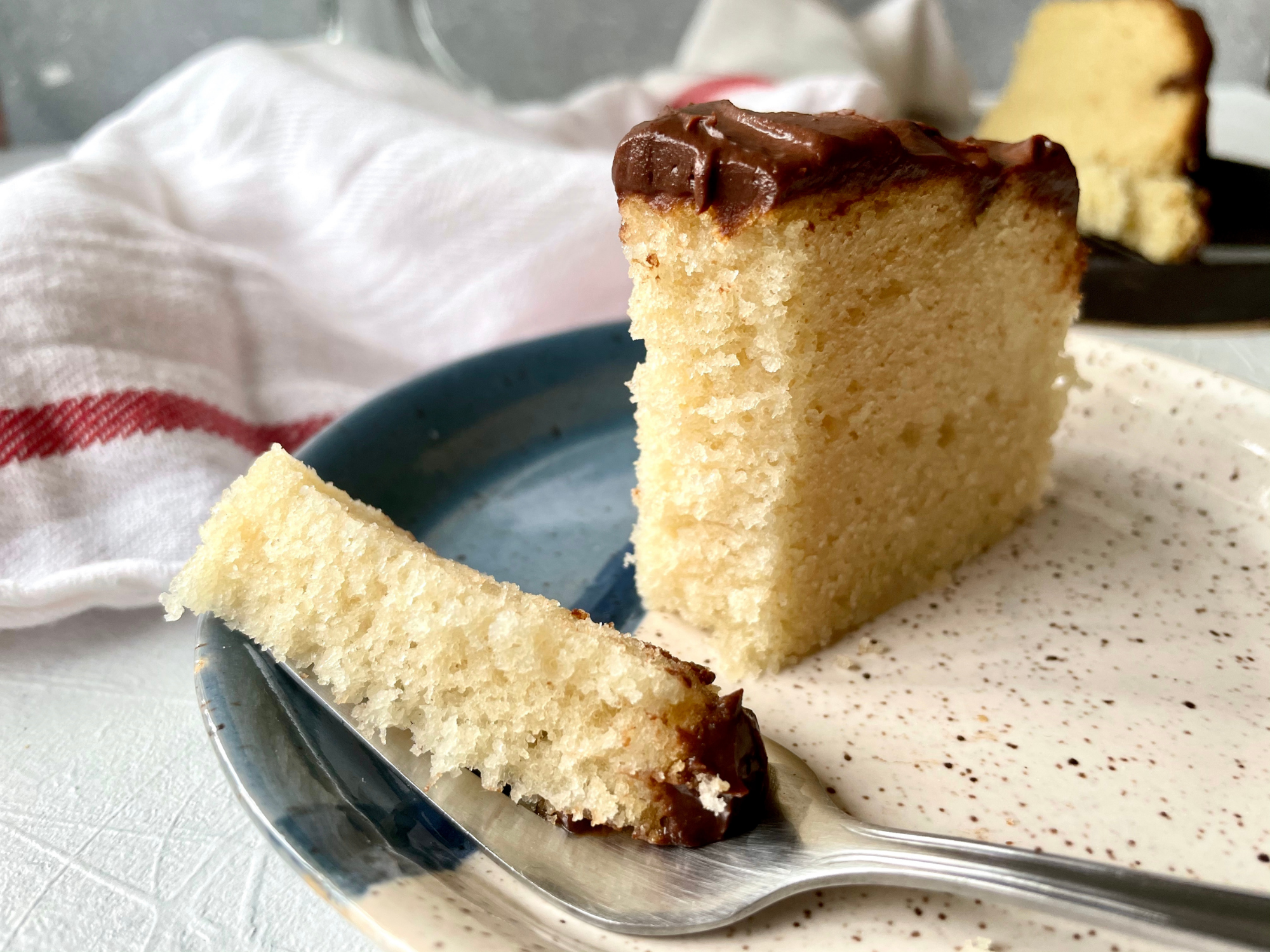
I was recently asked if the lemon cake recipe could be made into a vanilla one, which got me testing and thinking about how I should probably share a basic vegan vanilla cake recipe on the blog (thanks Cassandra!). But why stop at one recipe when I could share two that you can use depending on what you’re making?
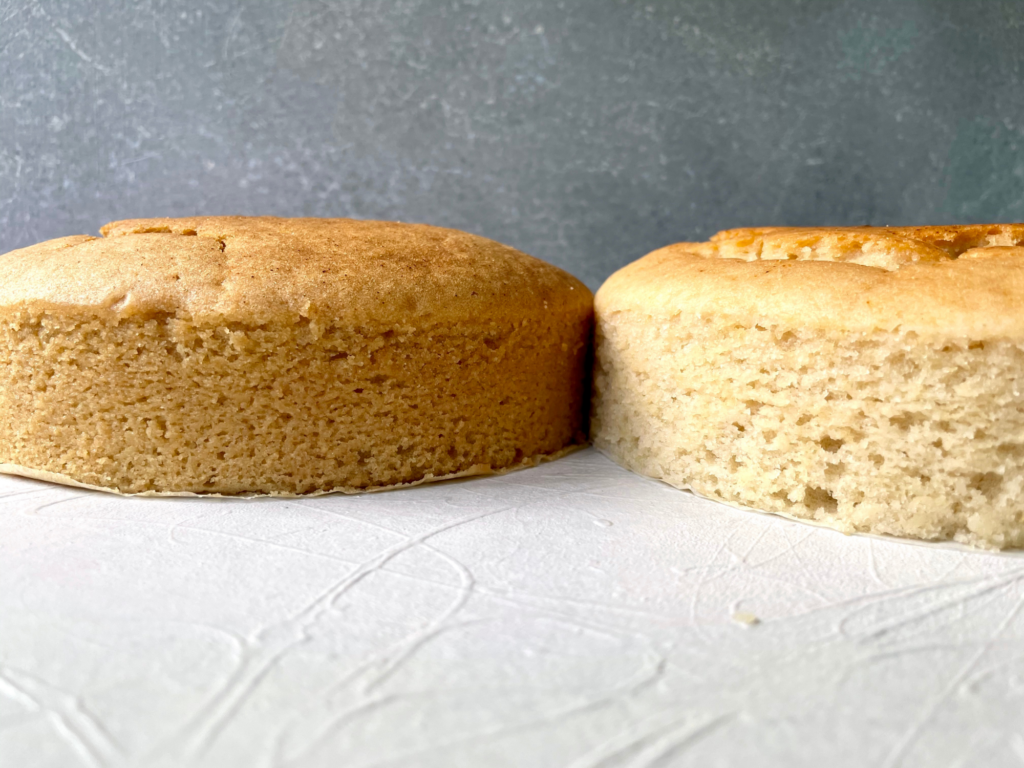
Both cakes are moist, not overly sweet, very easy to make (no special equipment!) and just require simple pantry staples that you probably already have. One yields a light and fluffy white cake while the other has a slightly tighter crumb perfect for layer cakes.
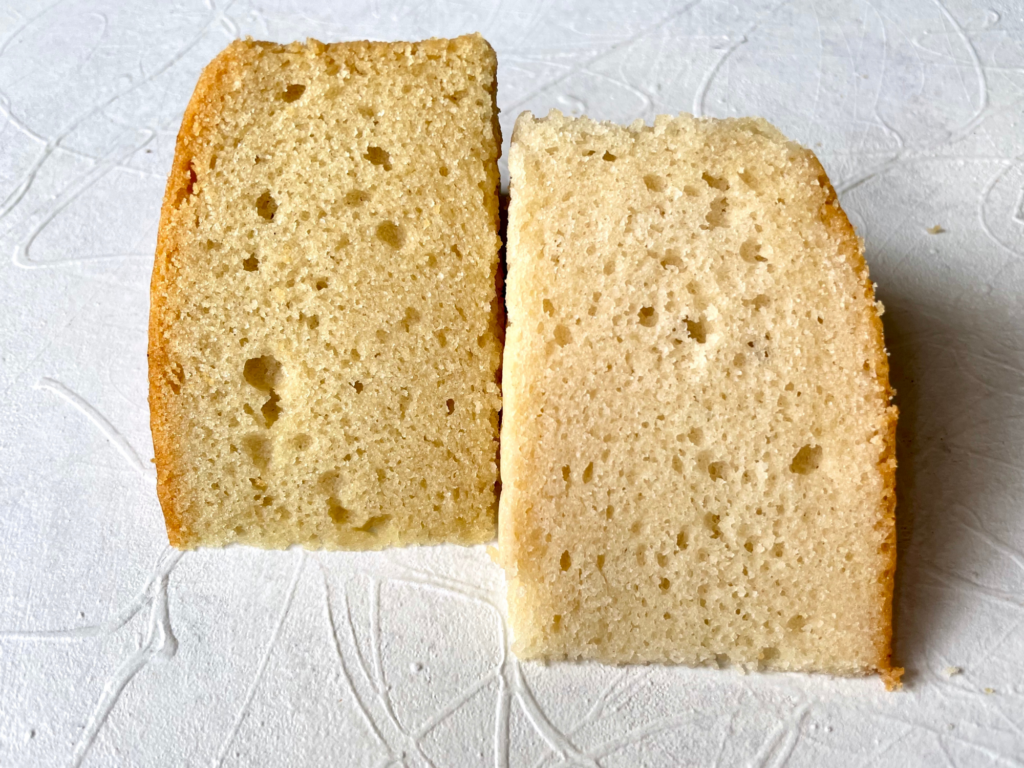
So whether you want to make just one quick and simple vanilla cake for tea, or an epically frosted 3-layer birthday cake, I’ve got you covered (hopefully).
The light and fluffy vegan vanilla cake
This cake is the one based on the lemon cake recipe. In some ways it can be compared to a white cake. It’s soft, fluffy, tender and has an almost buttery flavour, although there’s none in it.
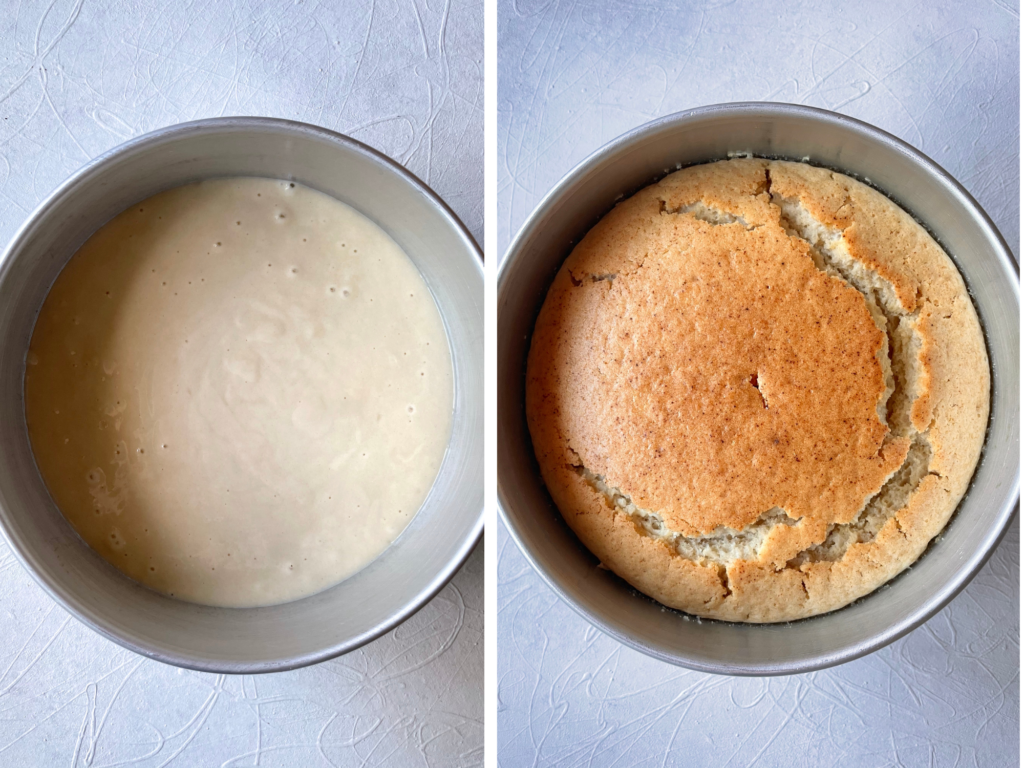
The addition of cornstarch gives it a very light and airy crumb, but also makes it more fragile than the other cake. The slightly lower baking temperature for this cake also helps with the light texture as well as giving it more lift. The Cake Blog has a great post comparing cake baking temperatures if you’re interested in seeing the difference it can make.
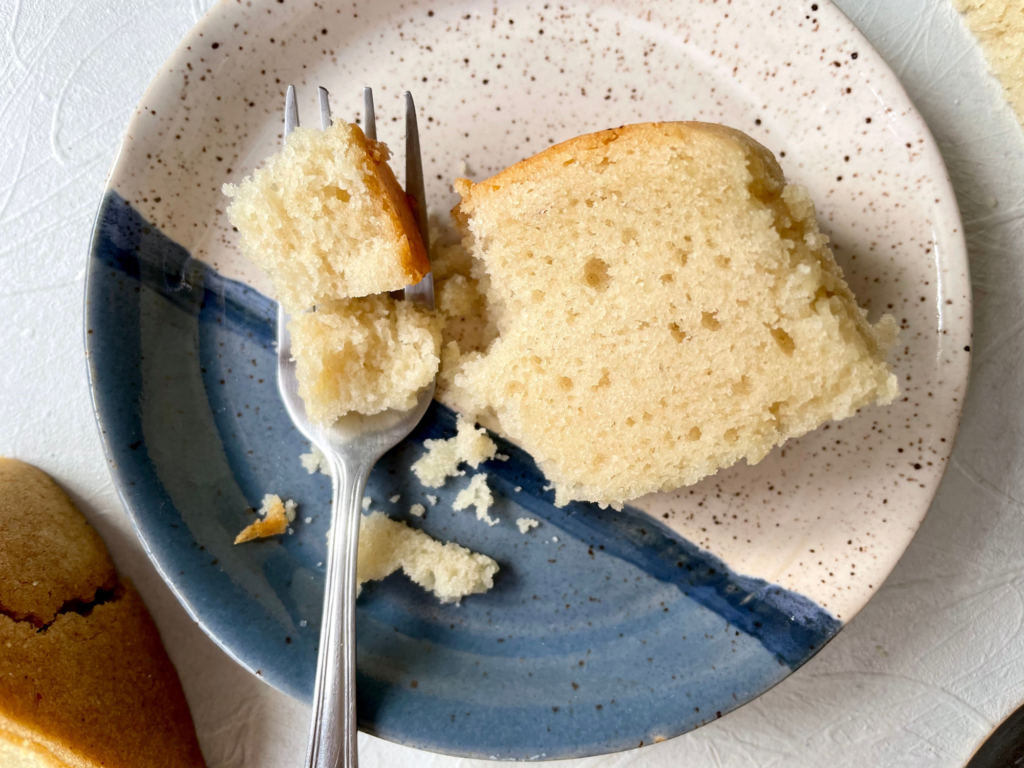
Also, I use vegetable oil instead of, say, refined coconut oil or vegan butter in this case because it’s liquid at room temperature and therefore keeps the cake soft and moist, even in the fridge (to a certain extent). Whereas with a solid fat it would seem stiffer and would harden significantly in the fridge. But if you opt to use this one for a layer cake, replacing the fat can help it hold its shape (and the weight) better.
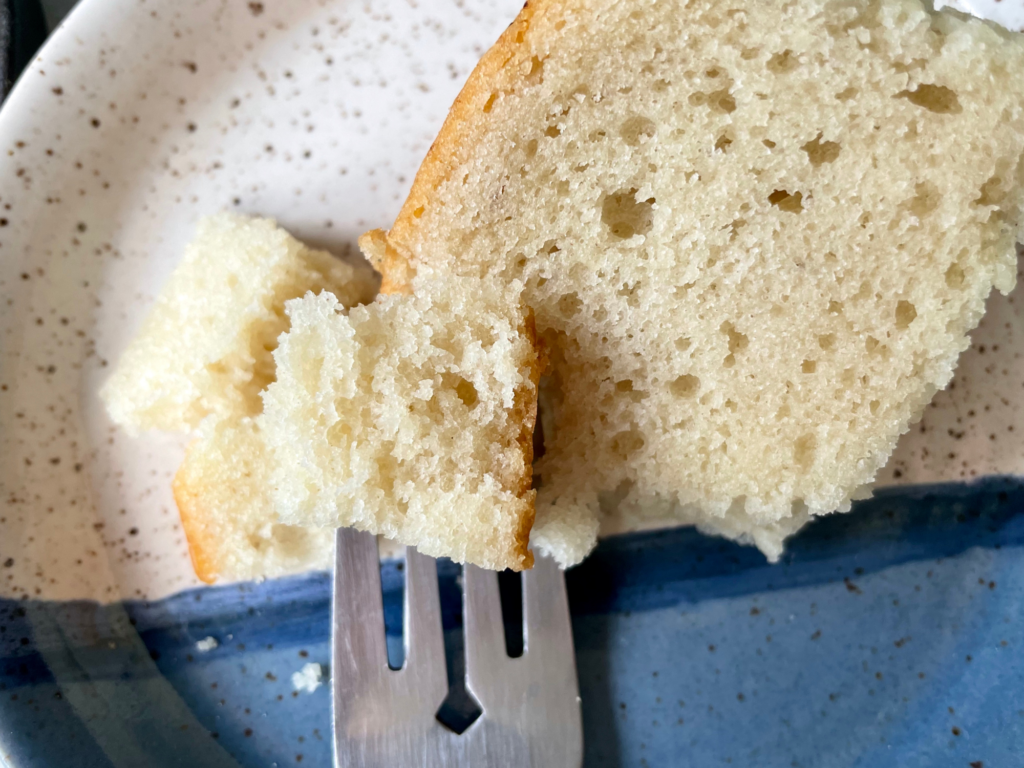
But overall, this recipe is perfect for single layer cakes topped with frosting (or not), splitting down the center to frost the middle, or to make cupcakes. And it doesn’t stop there! You can flavour it with spices, citrus zest or other extracts too.
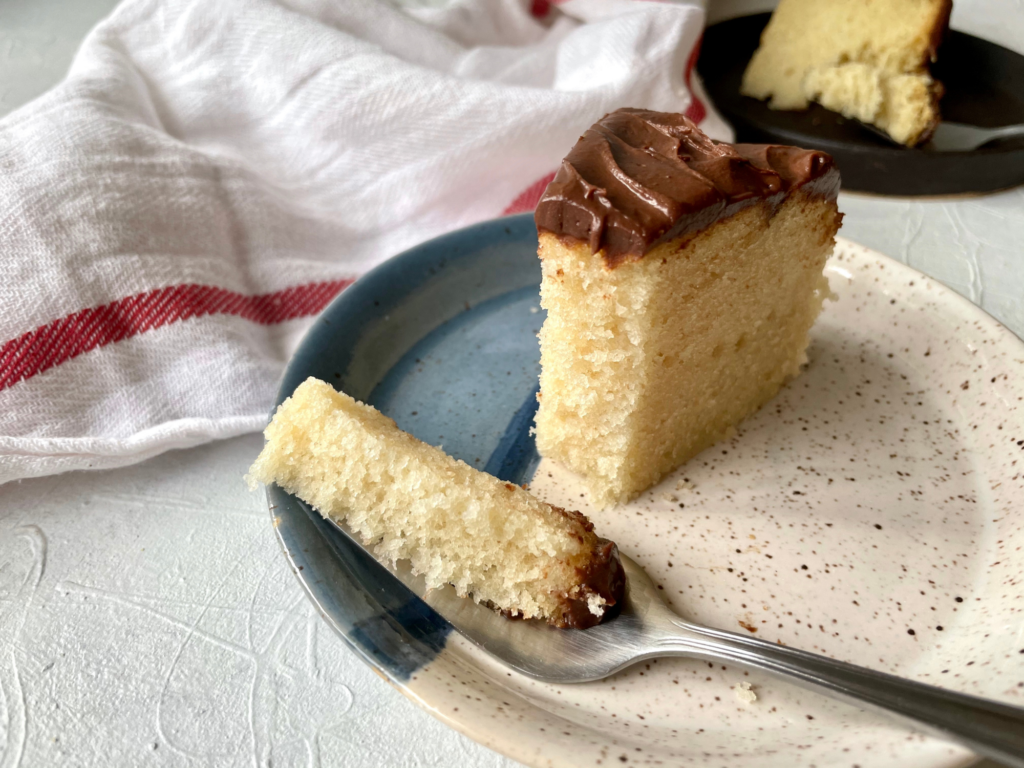
vegan vanilla cake for layering
This version is very similar to the other one but contains baking soda (and less baking powder), vinegar, has less water and slightly more flour. It has a more yellow hue, a “butter cake” kind of taste and a more pronounced golden crust all around because of the different baking temperature. But it’s equally soft and moist, just less fragile.
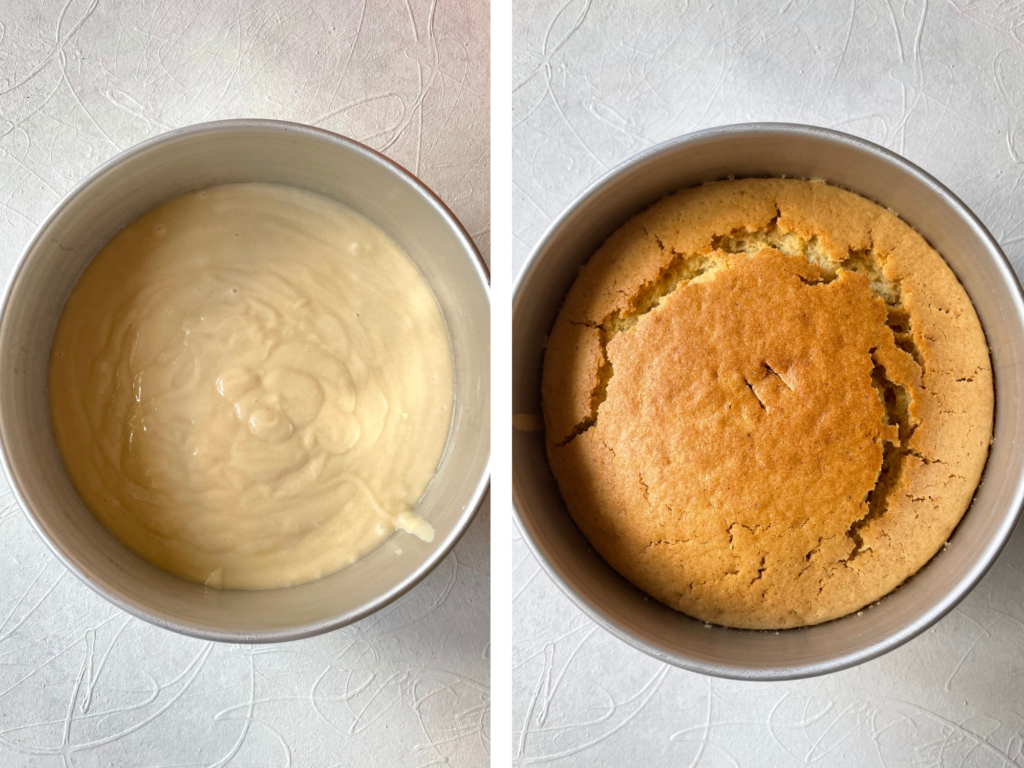
And although there’s two kinds of leavening, it bakes up just a tiny bit less than the white cake. It also has a tighter crumb and holds its structure better thanks to the lesser amount of water and extra flour, which is why I like it for layer cakes.
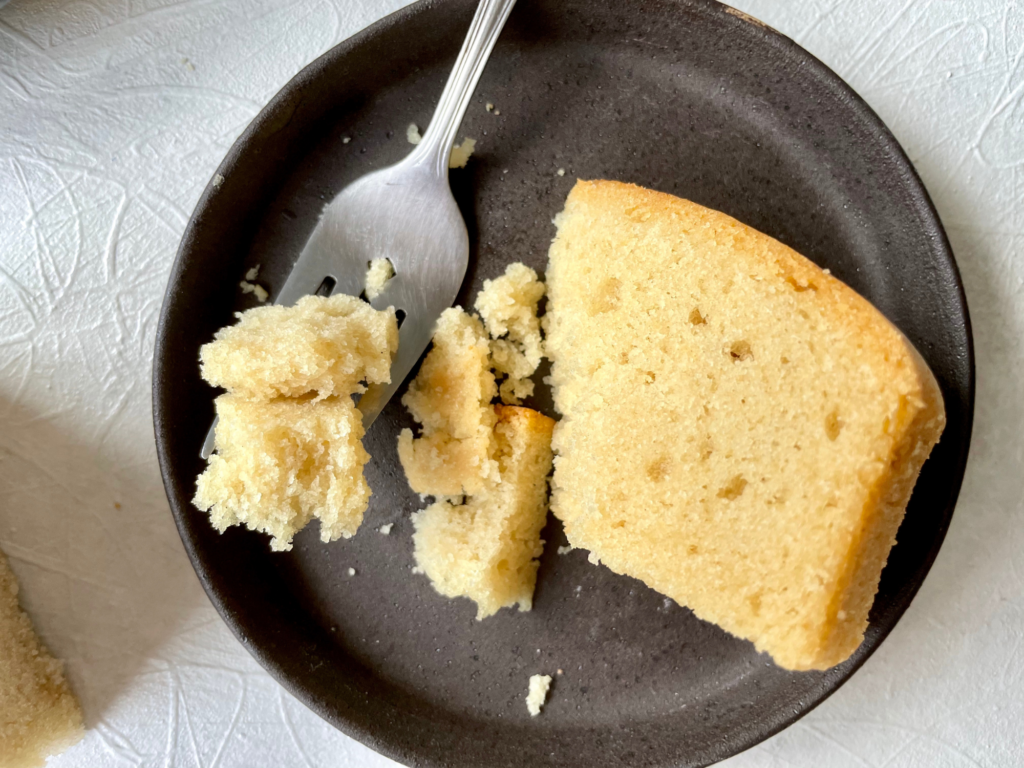
If you want it even sturdier, you can replace half or all of the oil with melted refined coconut oil or melted vegan butter. As mentioned, since that way the cake hardens at room temperature or in the fridge, the layers can hold their structure better for slicing, filling and stacking. But it also works perfecly well without changing the fat too.
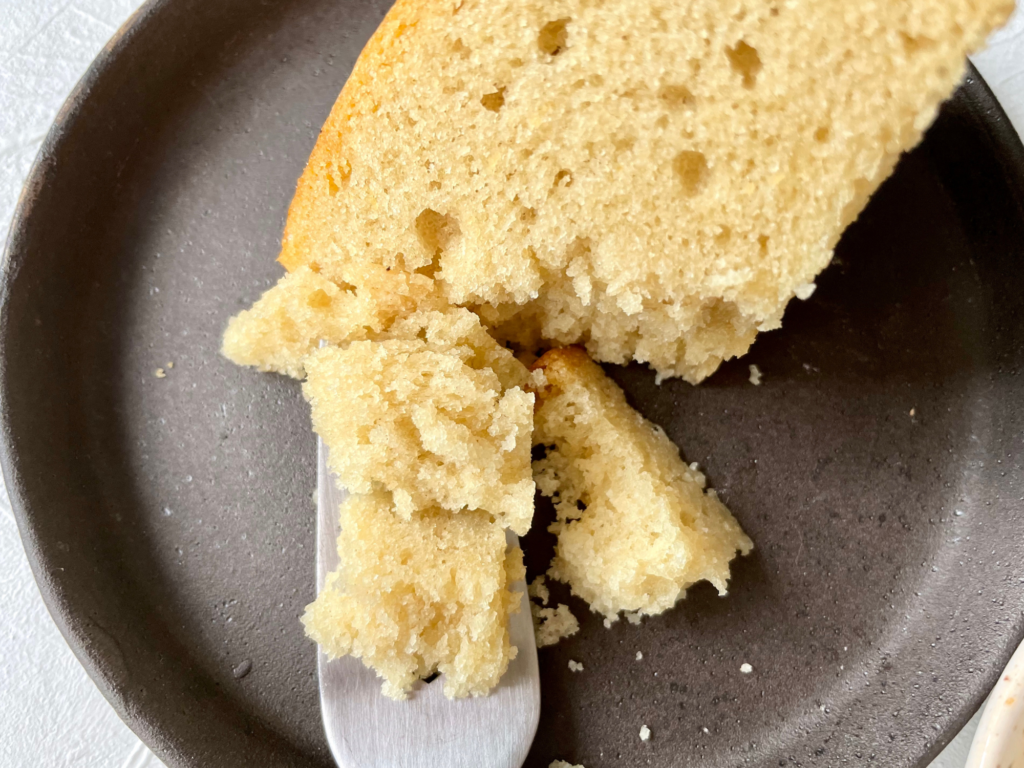
And as with the other cake, it can be flavoured however you like. You can also use it for cupcakes, although I prefer the other recipe since it’s so light and fluffy.
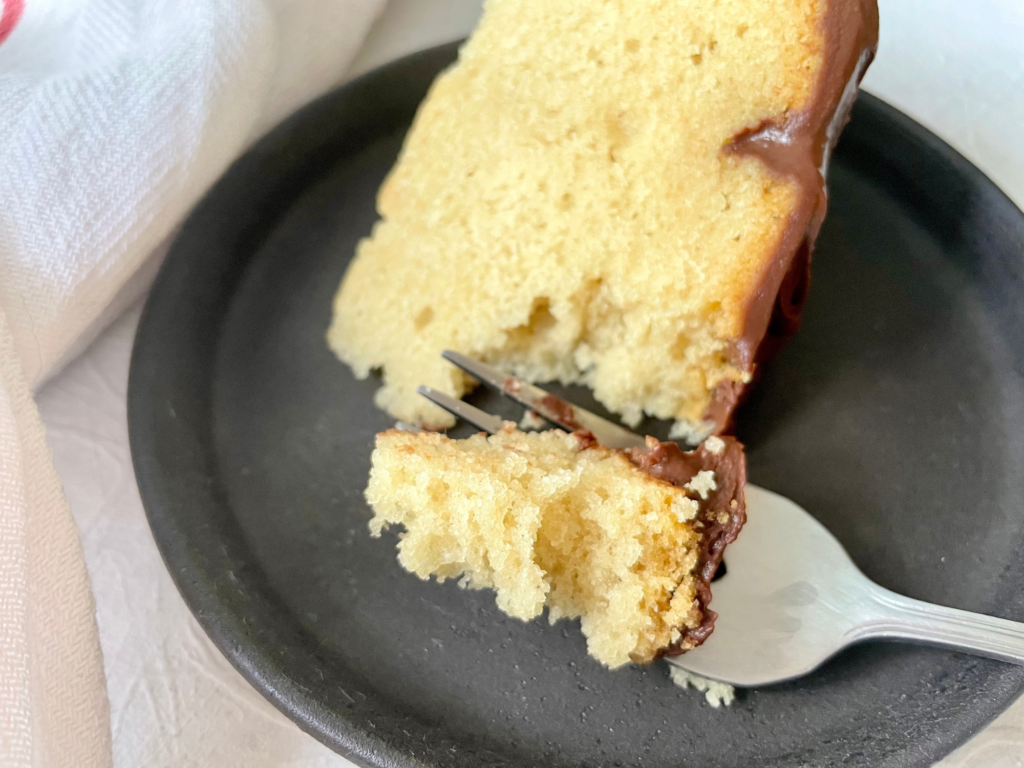
Conclusion
Both these vanilla cakes are great basic recipes you can use for different applications. You can even try both and decide for yourself which one works best for you. They’re easier than your typical creamed butter type of cake – which we’ll get to eventually – and just as good!
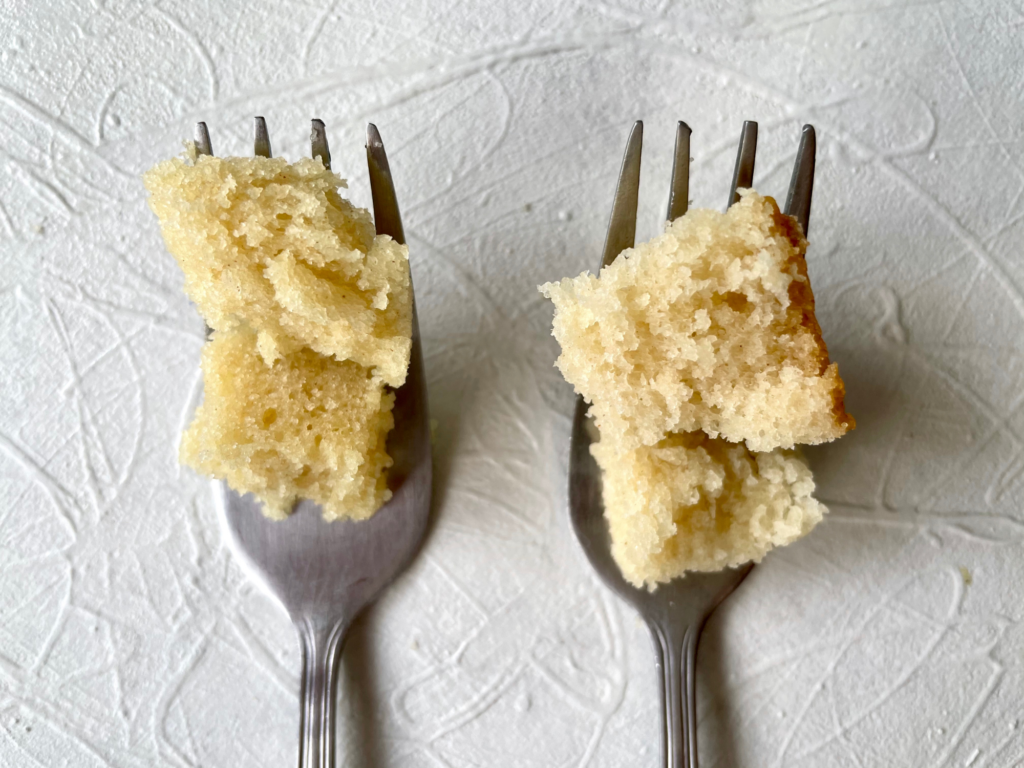
And I can’t tell you personally if they taste like non-vegan vanilla cake, because it’s been too long, but they’ve received the omnivore stamp of approval! So there’s that.
Storing the cake
Storing is the same for both cakes. They can be kept in a closed container at room temperature for about a day after they’re baked. Since they’re quite moist, they go kind of mushy/too moist with time in the container at room temperature. So you can transfer them, still in the container, to the fridge for up to 3 days to avoid that. They can also be frozen for up to a month very tightly wrapped.
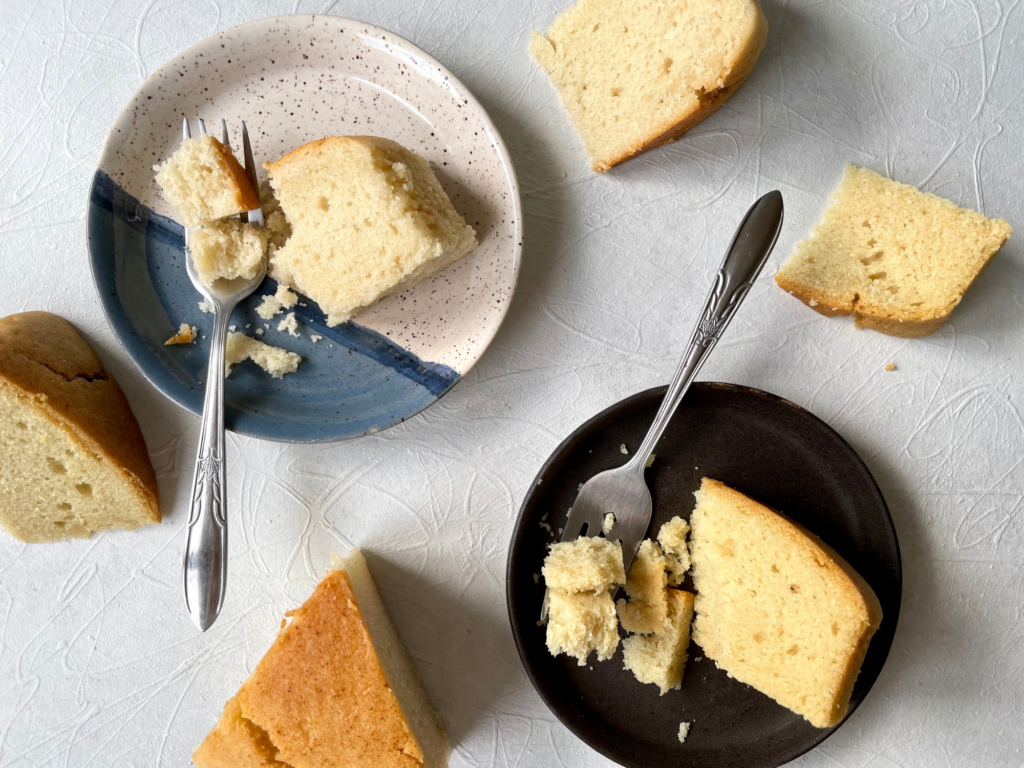
Now if you’ll excuse me, I have a lot of cake to eat (just kidding, I do share).
If you make this recipe please let me know in the comments! All feedback is very much appreciated and I would love to hear from you! You can also tag me on instagram @the.quaint.kitchen or use the hashtag #thequaintkitchen to share your creations!
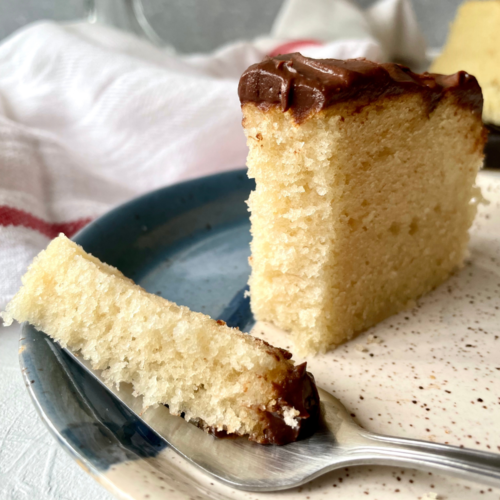
Vegan Vanilla Cake 2 Ways
Ingredients
White Cake
- 210 g all-purpose flour
- 30 g cornstarch
- 1 tbsp baking powder
- ⅛ tsp salt
- 100 g neutral oil, (grapeseed, canola, vegetable…)
- 220 g water
- 160 g white granulated sugar
- 1 ½ tsp vanilla extract
Layering Cake
- 255 g all-purpose flour
- 1 ½ tsp baking powder
- ¾ tsp baking soda
- ⅛ tsp salt
- 100 g neutral oil
- 200 g water
- 160 g white granulated sugar
- 1 ½ tsp vanilla extract
- ¾ tsp white vinegar, or apple cider vinegar
Instructions
White Cake
- Preheat your oven to 170°C/340°F and grease a 7 inch round cake pan and line the bottom with parchment.
- Whisk together the flour, cornstarch, baking powder and salt and set aside.
- In a separate bowl, whisk together the oil, water, sugar and vanilla.
- Add in the dry ingredients and whisk just until no lumps remain. Avoid overmixing to prevent a gummy cake.
- Pour into the lined pan and bake for 45-50 minutes or until a toothpick inserted in the center comes out clean.
- Let it cool about 10 minutes in the pan before transferring it to a wire rack to cool completely.
Layering Cake
- Preheat your oven to 180°C/350°F and grease a 7 inch round cake pan and line the bottom with parchment.
- Whisk together the flour, baking powder, baking soda and salt and set aside.
- In a separate bowl, whisk together the oil, water, sugar, vanilla and vinegar.
- Add in the dry ingredients and whisk just until no lumps remain. Avoid overmixing to prevent a gummy cake.
- Pour into the lined pan and bake for 45-50 minutes or until a toothpick inserted in the center comes out clean.
- Let it cool about 10 minutes in the pan before transferring it to a wire rack to cool completely.
Notes
- *Disclaimer: I have a tiny not-so-great oven, so your bake time may vary from mine.
- I strongly suggest making recipes by weight, if you make them by cups I can’t guarantee that you’ll get the same results.
- A part or all of the oil can be replaced with melted refined coconut oil or melted vegan butter for a sturdier cake.
- If you want a more pronounced vanilla flavour, you can up it to 2 tsp.

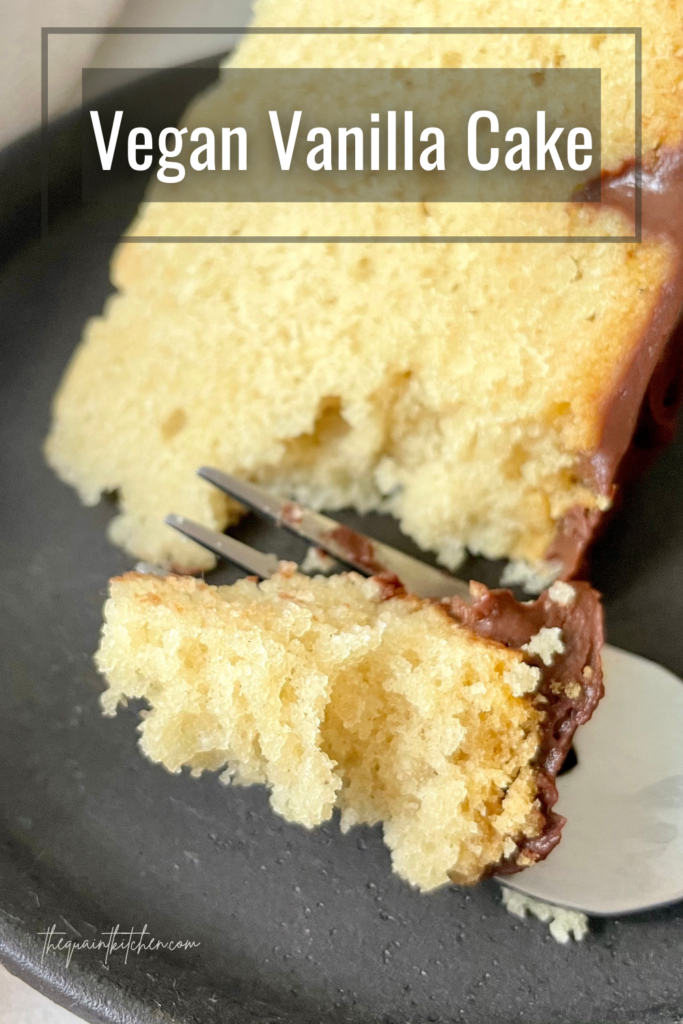
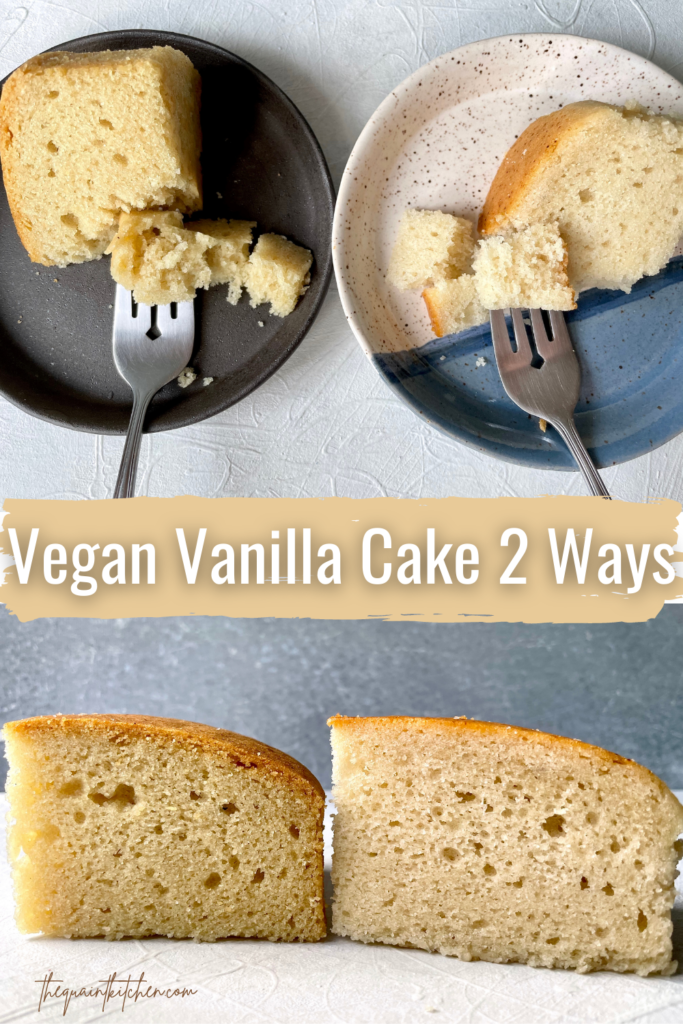
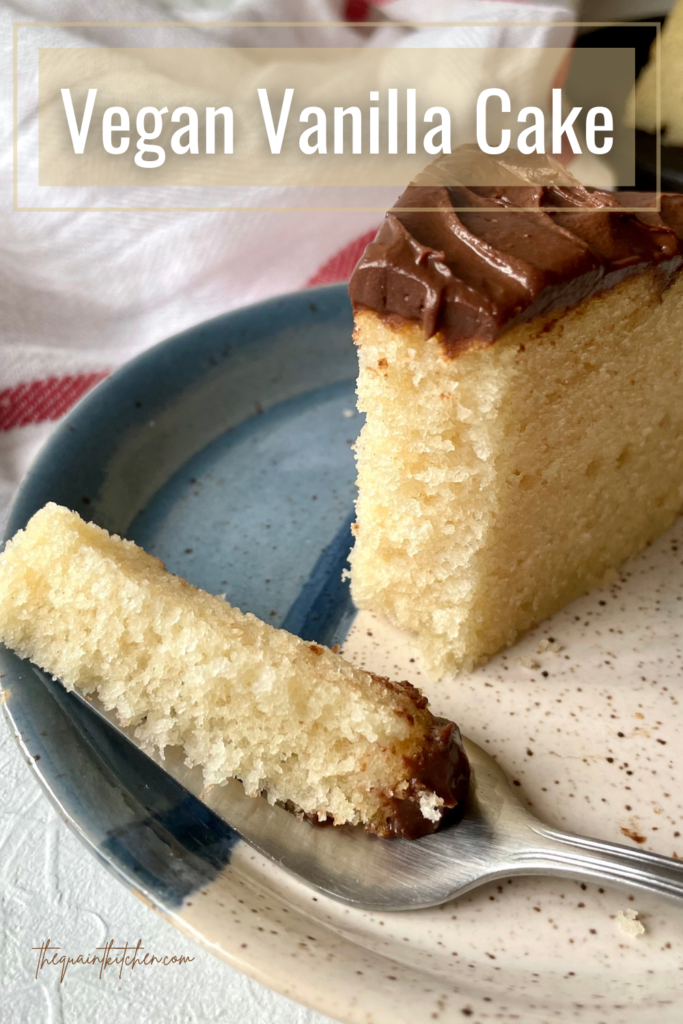
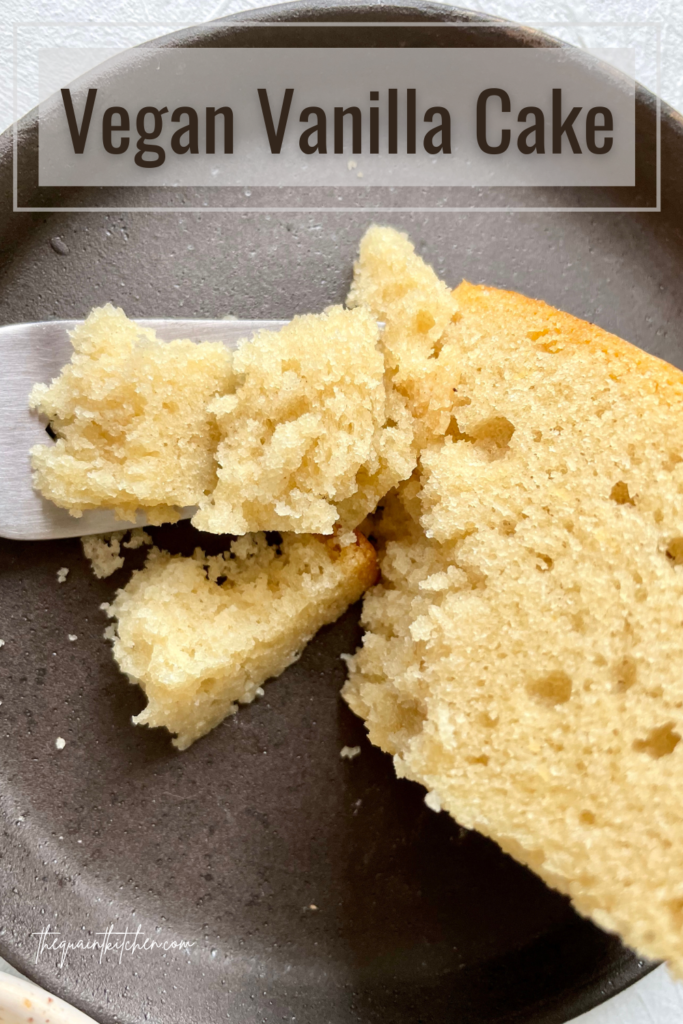
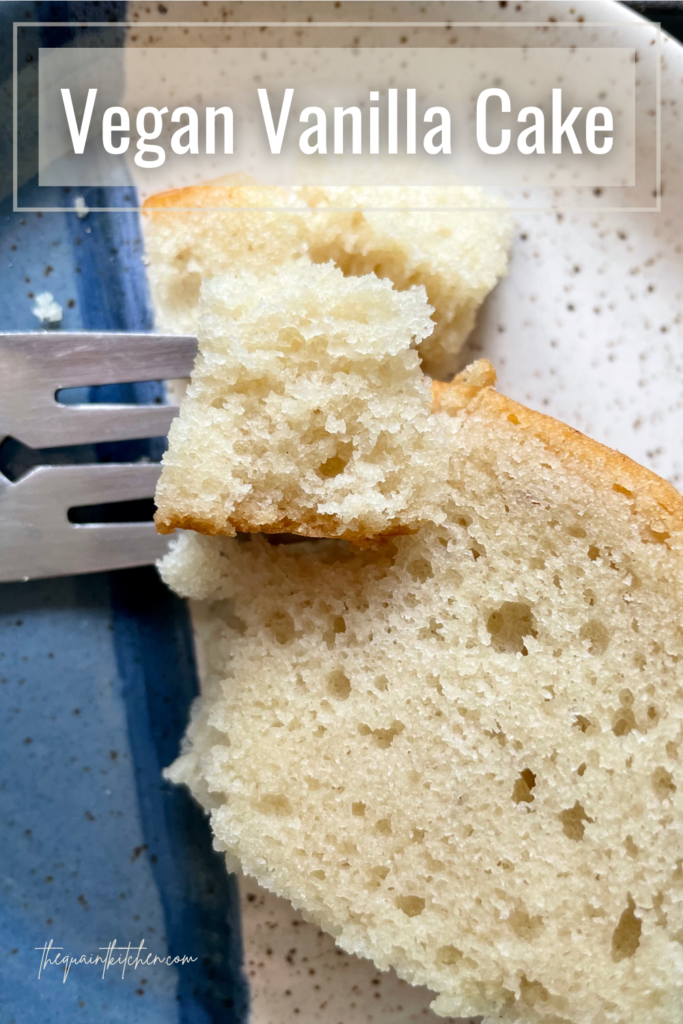
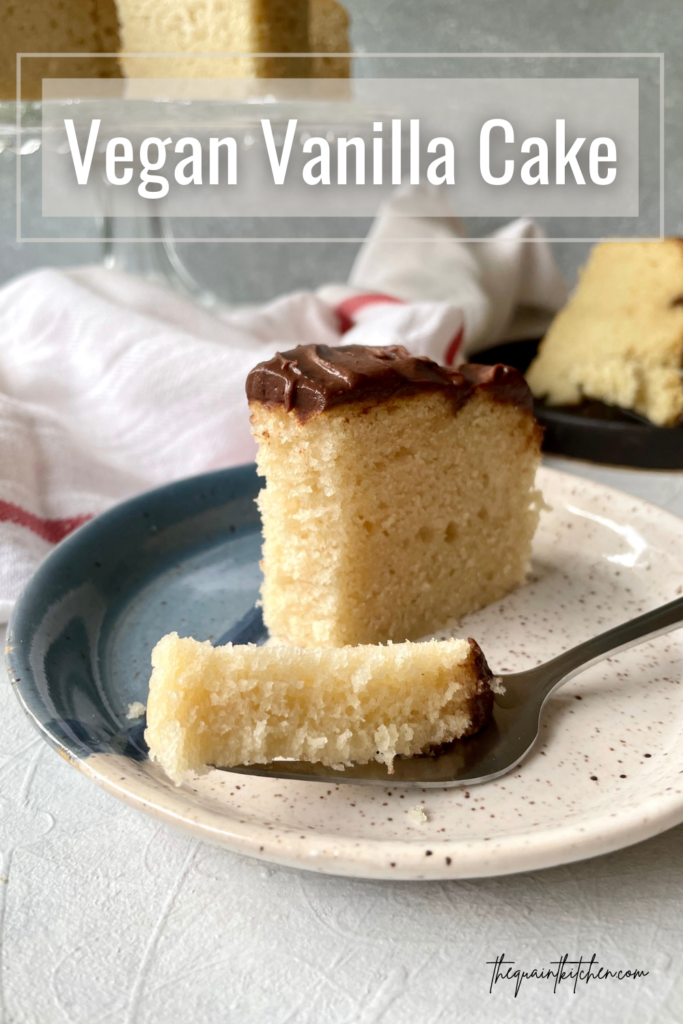
Both of these cakes come out great! They’ve been my go to vanilla cakes since I started making them months ago. Perfect
That’s awesome Joel! Thank you for the kind comment! I’m so glad you like them ☺️
hi there! may i confirm that the baking powder listed in both recipes are right? one is twice as much as the other?
Hi! Yes they’re the right quantities! The second cake doesn’t need as much because there’s also baking soda in it 🙂
thanks! how can i convert the baking powder in the first recipe to some baking powder & some baking soda and then adding vinegar into the recipe? would that follow the 2nd recipe?
Honestly I don’t like messing with leaveners, so I wouldn’t personally venture into that! Is there a reason you would want to do that?
hi there thanks for your reply! am thinking of using some ‘buttermilk’ in the first recipe?
also, wanted to ask if the oil content is listed correctly? it seems a little more than many other recipes ~
many thanks 🙂
you may reach me via email as well!
Hi! Using buttermilk isn’t necessary and may affect the way the baking powder reacts, if you want extra richness in the cake you can simply replace the water with any plant milk! And yes the amount of oil in the recipe is correct 🙂